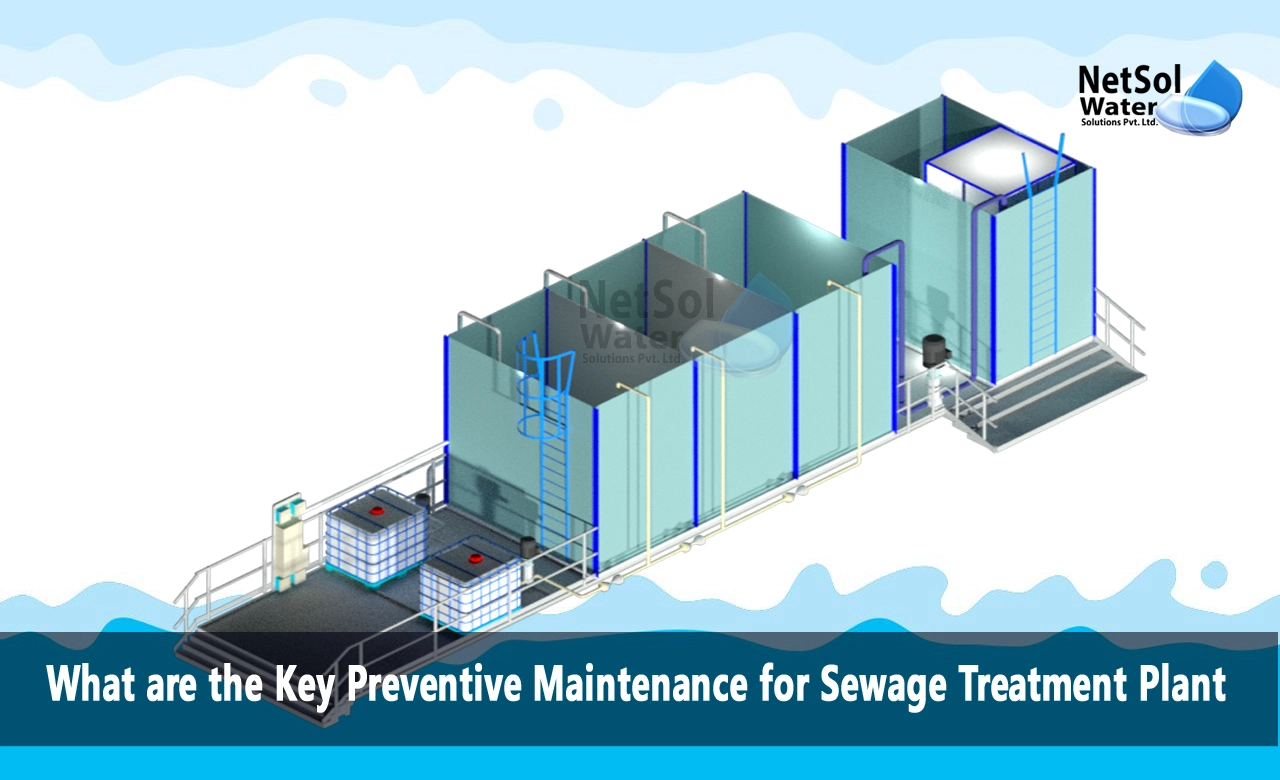What are the Key Preventive Maintenance for STP Plant?
Sewage treatment plants play a vital role in protecting public health and the environment by removing contaminants from wastewater before it is discharged into the environment. However, like any complex infrastructure, sewage treatment plants require regular maintenance and upkeep to operate effectively over their design life. Preventive maintenance is essential for a sewage treatment plants to function properly and avoid failures that could lead to permit violations, service disruptions, and damage to equipment. We provide an overview of key preventive maintenance activities for the major processes and equipment at a sewage treatment facility.
Preventive Maintenance for Sewage Treatment Plant
Preliminary Treatment Section
The preliminary treatment section of a sewage treatment plant removes large objects, grit, grease and sand that can damage equipment in downstream processes. Preventive maintenance activities for preliminary treatment include:
1- Regularly cleaning and removing built-up debris from bar screens and mechanical bar screens. Bar screens should be inspected daily and cleaned as needed.
2- Checking grit channels and removing accumulated grit frequently, such as once or twice per week. Grit levels should be monitored and channels cleaned before grit builds up to unacceptable levels.
3- Frequently skimming floating grease and scum from the surfaces of primary clarifiers and grease traps, such as daily. Skimmers should be checked for wear.
4- Periodically draining and cleaning primary clarifier tanks. Tanks may need to be taken out of service and cleaned every 6-12 months.
5- Lubricating and inspecting mechanized equipment like bar screens, grit collectors and scum removal mechanisms. Bearings, chains and drives should be lubricated routinely per the manufacturer’s specifications.
Primary and Secondary Treatment Sections
The primary and secondary treatment sections include sedimentation tanks, biological treatment systems, clarifiers, and filtration equipment. Preventive maintenance activities include:
1- Periodically cleaning sedimentation and clarification tanks using techniques like hydroblasting. Cleaning frequency varies based on factors like wastewater characteristics.
2- Removing rag buildup and other debris from clarifier weirs and baffles as needed.
3- Routinely checking activated sludge system equipment like air diffusers, return activated sludge pumps, and chemical feed pumps. Air diffusers may need cleaning or replacement every 2-3 years.
4- Pulling and inspecting biological filter media annually, replacing media as needed. Filter underdrains should also be periodically flushed.
5- Backwashing sand filters regularly, such as every 24-72 hours depending on wastewater loading. Monitoring head loss.
6- Sampling mixed liquor and return activated sludge to monitor MLSS levels and other parameters, adjusting activated sludge system operation as needed.
Disinfection and Solids Handling
Key maintenance tasks for disinfection systems and solids handling processes include:
1- Cleaning and calibrating chlorine residual analyzers regularly per the manufacturer’s recommendations.
2- Testing ultraviolet disinfection bulb intensity quarterly and replacing bulbs that have degraded below requirements. Keeping sleeves clean.
3- Inspecting and lubricating solids handling equipment like centrifuges, belt filter presses, and conveyors. Replace worn belts and parts as needed.
4- Monitoring polymer systems, inspecting strainers, cleaning injection quills, and adjusting dosage to optimize solids thickening and dewatering.
5- Removing accumulated solids from digestion tanks every 5-10 years. Inspect tank integrity.
Conclusion
By routinely performing preventive maintenance on critical sewage treatment equipment and infrastructure, facilities can avoid costly failures, achieve permit compliance, and sustain high treatment plant performance. Equipment manufacturers provide maintenance recommendations that should be followed. Facilities should track completion of maintenance tasks and optimize their preventive maintenance approach based on their unique equipment composition, age, wastewater characteristics and other factors. A well-executed preventive maintenance program reduces operating costs and protects public health by helping ensure continuous effective sewage treatment.
Do you need an advice or assistance on selecting the best water and waste water treatment unit? We have solutions for all your problems!
Let us know your problem, our experts will make sure that it goes away.
For an assistance or related query,
Call on +91-965-060-8473 Or write us at enquiry@netsolwater.com



